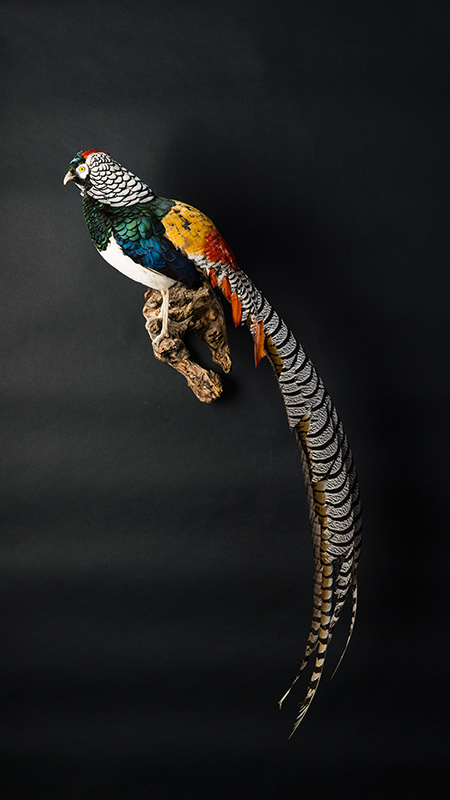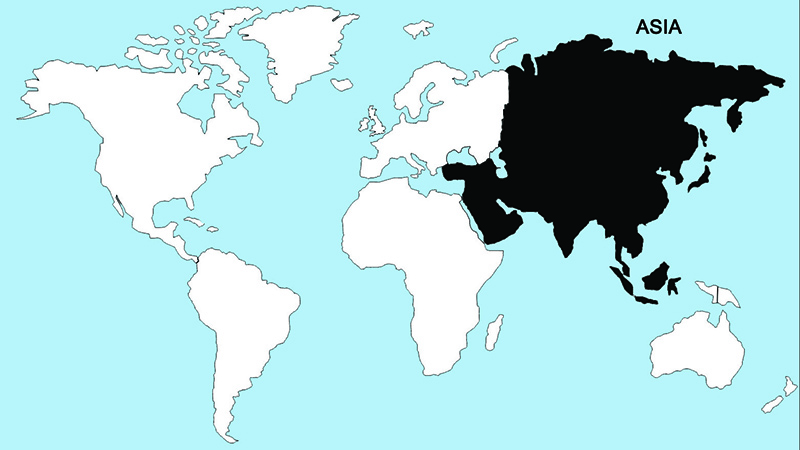Lady Amherst's Pheasant

No detailed behavioral comparisons of the Lady Amherst's pheasant with the golden pheasant have been made, but it would seem that the two species have very similar vocalizations. Likewise, the display repertoires of these two species are virtually the same, if not identical.
Little is known of the breeding season in China, but it is believed to begin about the beginning of April, and continue through May and into June. There are only two records of clutches taken from the wild, of four and seven eggs. Both nests were found in heavy forests where they had been laid under the protection of a bush. In captivity, clutch sizes of 6–12 eggs are usual and the eggs are probably laid on a daily basis. As with other pheasants, incubation begins with the laying of the last eggs, and lasts some 22–23 days. As with the golden pheasant, only the female tends the young, which grow at a relatively rapid rate. Males do not acquire their full adult plumage until they are two years old, but females often lay eggs in their first year.
Regions Birds Are Found

Collection Location & Year
U.S. - Utah 2002
Taxonomy
| Order | Galliformes |
|---|---|
| Family | Phasianidae |
| Tribe | Phasianini |
| Species | Chrysolophus |
| Genus | amherstiae |
Gender
Male
References
- Beebe, C. W. 1918–1922. A Monograph of the Pheasants. London, UK:Witherby
- Cramp, S., and K. E. L. Simmons, eds. 1980. The Birds of the Western Palearctic. Vol. 2. (Hawks to Bustards) London, UK: Oxford Univ. Press.
- Johnsgard, P. A. 1986. The Pheasants of the World. Oxford, UK: Oxford Univ. Press.
- Johnsgard, P. A. 1999. The Pheasants of the World: Biology and Natural History. Washington, DC: Smithsonian Institution Press.
- del Hoyo, J. A. Elliot, and J. Sargatal, eds. 1994. Handbook of Birds of the World. Vol. 2 (New World Vultures to Guineafowl). Barcelona, Spain: Lynx Editions.